If you’ve got a thriving hydroponic garden up and running, but you’re not sure what to plant next, then keep reading. We’ve got a packed article, full of inspiration and the twenty-five best hydroponic plants to grow in Australia.
No matter the setup, you can grow everything in this article all year round with indoor hydroponics, and the right grow lights to help light and eat your space. From basil to cantaloupes, there’s very, very little you can’t grow using hydroponics.
More...
What is Hydroponics?
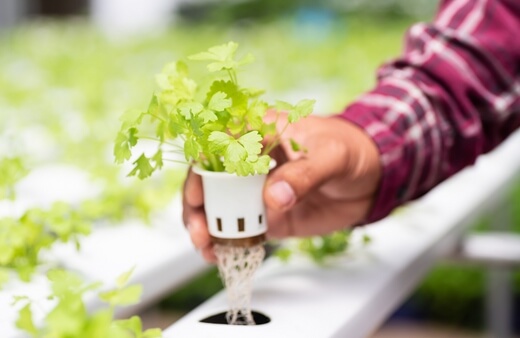
Hydroponic growing is the art of growing fruit, vegetables, and vegetative crops without soil, and providing liquid nutrients to their fibrous roots through soluble hydroponic fertilisers and feeds.
There are several methods of hydroponics, from mini grow kits, to large, free-standing vertical hydroponics with running water.
How to Set Up Hydroponics
For hydroponic newbies, check out our guide to hydroponics for beginners, including how to set up your own DIY deep water hydroponics. In short, if you have oxygen pumps, clean water, and plenty of soluble nutrients, you can grow hydroponic plants in nothing more than a basic plastic box!
What Type of Plants Can Grow in Hydroponics?
Almost every type of plant can grow, and thrive, in hydroponics. From strawberries and tomatoes to kale and spinach, you can sow, grow and harvest everything you need from one small hydroponic garden all year round.
The only groups of plants that grow badly, or not at all, in hydroponics are root vegetables. Roots rely on limited moisture and swell or extend to search for water. In hydroponics, root vegetables will split, or put out fibrous roots instead of expanding the edible part of the plant.
Our list below gives detail on the best best plants for hydroponics, with pros, cons, and instructions for how and when to plant them, and the sort of fertilisers you’ll need to buy. If you’re just browsing for quick answers though, the best plants to grow hydroponically are:
- Basil
- Mints
- Stevia
- Lettuce
- Spinach
- Tomatoes
- Cucumber
- Kale
- Spring Greens
- Beans
- Strawberries
- Peppers
- Chives
- Spring Onions
- Celery
- Sage
- Melons
- Chard
- Blueberries
- Primocane Raspberries
- Cranberries
- Peas
- Broccoli
- Parsley
- Cannabis
Best Hydroponic Plants to Choose From
1. Basil
Basil is one of the easiest plants to grow hydroponically. It grows quickly, roots within 24 hours from cuttings, and germinates reliably in mesh pots with the right growing medium.
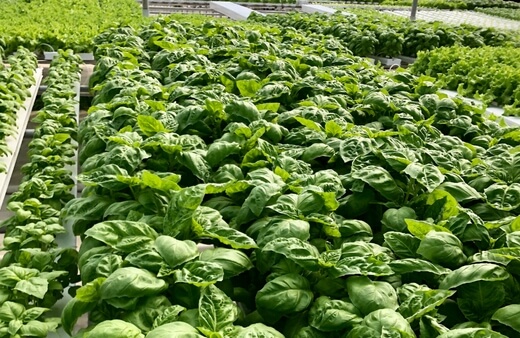
How to grow basil using hydroponics
To grow basil using hydroponics sow your seed directly into a mesh pot, filled with coir compost, or wool. The seed will germinate in around one week and begin to produce leaves after 2-3 weeks. After three tiers of leaves have emerged, pinch out the plant to its lowest pair of leaves. This encourages bushier growth.
Within a month of sowing basil in hydroponics, you should have a reasonably well-shaped plant, ready to harvest. Always harvest stems down to a few leaves from the tip, which encourages new growth, and more harvests.
Pros


Get Your Free Guide:
Master Growing Australian Natives eBook
A Must Have Complete Guide for Every Australian Garden
Get Your Free Guide:
Master Growing Australian Natives eBook
A Must Have Complete Guide for Every Australian Garden
Cons
2. Mint (Peppermint, Lemon Balm, etc.)
Nearly all members of the mint family can be grown using hydroponics. They root quickly from cuttings and will continue to grow and thrive all year round, particularly in indoor setups.

Growing mint using hydroponics
The best way to grow mint hydroponically is from cuttings. Take any section of non-flowering mint, and strip the lower leaves. Then just pop the stem in water (ideally using a mesh pot filled with wool).
Within 3-4 days, roots will be visible through the edge of the pot, and after two weeks, you should see new growth beginning. From this point onwards, harvest your hydroponic mint regularly, and then cut it back once a year to prevent it becoming leggy.
There is no need to replace hydroponically grown mint, as it can thrive in one setup for years with regular cleaning, water changes, and nutrients.
Pros
Cons
3. Stevia
Stevia, the natural sweetener, often used to flavour food and teas, is a member of the Aster family and one of the most beautiful plants to grow hydroponically. After its first season outdoors, stevia usually dies back and needs re-sowing, but will re-grow for several years in indoor hydroponics, giving you a steady stream of natural sweetener.

How to grow stevia hydroponically
Stevia, like mint, grows best from cuttings in hydroponics, but can be grown with reasonable success from seed too. Simply place the cutting, or seed, in a mesh pot, filled with wool or coir fibre which will act as a support, rather than a source of nutrients.
After a few weeks, you’ll notice roots or top growth. Stevia requires balanced hydroponic nutrients to develop its flavour and characteristic sweetness so is a brilliant introduction to slightly more attentive hydroponics than basil or mint.
Pros
Cons
4. Lettuce
- Iceberg Lettuce
- Butterhead Lettuce
- Romaine Lettuce
- Radicchio
All types of lettuce grow well in hydroponics, whether its leafy salads, like mustard and rocket, or ball-forming lettuce like radicchio, butterhead, or iceberg.
The constant moisture levels encourage them to develop specific water-bound roots, which won’t rot and will create crisper, cleaner lettuce than you could possibly grow outdoors, with a massively reduced risk of slug damage.

How to grow lettuce using hydroponics
Lettuce can be grown from seed, directly into hydroponics, but lettuce seeds can be small, so be careful that you’re only sowing one plant per pot (for ball-forming lettuces).
After sowing, double check that the pH is just slightly acidic (6.5 is ideal), and add A nutrients to the water to support roots and vegetative growth.
Pros
Cons
5. Spinach
Spinach could not be easier to grow in hydroponics. Spinach is one of the fastest growing hydroponic plants. Like basil, once it starts, you can just keep harvesting it until the plant expires, leaving a space to sow something new.
The biggest benefit of growing spinach in hydroponics, particularly in managed grow rooms, is that it is much less likely to bolt (set seed) which can ruin your plants.
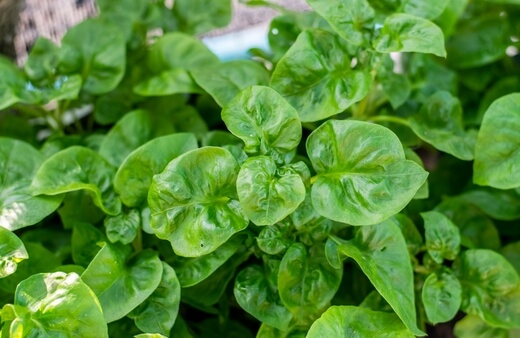
Growing spinach using hydroponics
If sowing from seed, it’s best to use freshly harvested spinach seeds, but you can stratify spinach seeds to improve germination in hydroponics (just keep them in the fridge for a week in an air-tight bag).
Sow spinach seedlings into coir pods, using mesh pots. When they germinate and have a few developed leaves, plant the pod into your hydroponic system. This is a more complex way of using hydroponics, by starting plants out of the system, but doing it this way will give you stronger spinach plants.
Make sure to use a mixed nutrient feed for your water to produce the rich flavour, and nutrient-packed leaves you want from good spinach.
6. Tomatoes
Tomatoes are probably the most famous fruit you can grow using hydroponics, with some exceptional commercial systems using fish to fertilise and oxygenate the water with natural oxygenators planted in running water hydroponic systems.
For a more discrete hydroponic system you can set up at home, you’ll be glad to know that tomatoes actually don’t need anything special from their hydroponics, other than nutrients, and plenty of oxygen in the water.

How to grow tomatoes using hydroponics
For indoor hydroponics, it's best to use pot-based hydroponic systems, as tomatoes can drink a LOT of water as they develop through the vegetate stage, and through fruiting.
If you use deep water hydroponics or a vertical system, make sure they have constant access to water, and the moisture level doesn’t fluctuate. Try to keep the pH at just below neutral (6-6.5 pH) and maintain a regular nutrient cycle.
You can sow tomatoes directly in hydroponics, but it is best to start them as seeds in pods away from the water, and plant them into the system at 3-4” tall.
If you are already growing tomatoes in soil, refer to our growing and care guide for more tips.
Pros
Cons
7. Cucumber
- Slicing Cucumbers
- Pickling Cucumbers
- Gherkins
Growing cucumbers in hydroponics is a great way to produce fresh, crisp fruits, and plan your harvests in advance. Rather than the sporadic ripening of vine cucumbers in soil or compost, hydroponic cucumbers will ripen almost daily.
Larger varieties like telegraph cucumbers will produce 1-2 fruits per week. Keep in mind that cucumbers often need a second cucumber or gherkin plant in order to successfully pollinate.
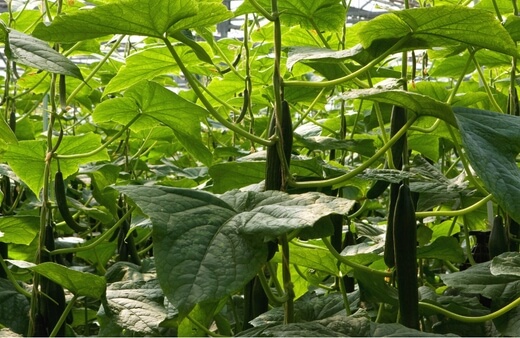
Growing cucumber hydroponically
You can start cucumber seeds directly in hydroponic mesh pots, in an operational tank, provided you have the air pump switched on, and a fresh air stone (changed every 5-6 weeks) switched on.
Once cucumbers have germinated, either keep them in bright light or under LED grow lamps (1m above the top of the plant at all times to prevent burns and fatigue).
As the plant develops, provide support, or trail it neatly from suspended or vertical hydroponic kits. Harvest regularly for a continuous crop until the plant begins to fade.
Pros
Cons
8. Kale
- Curly Kale
- Cavallo Nero
- Kalettes
Until I tried it, I honestly didn’t believe it. Brassicas seem like they wouldn’t work in hydroponics, with thick, firm stems and a tendency to develop mildew over their foliage in damp conditions. However, something about the constant moisture helps them to cope better with dampness.
The result is a beautifully flavoured kale, which has less of the cabbage tang which allows the fresher flavours to shine through. The firmer foliage works better for grilling and baking into kale crisp too.

Growing kale using hydroponics
Start kale directly in your hydroponic system using coir or wool in mesh pots. It can take a little while to germinate but will grow quickly when it does so be patient at first.
After germination, wait until the plant is about 1ft tall before harvesting anything, and then harvest continuously from the bottom up, leaving a crown of foliage at the top of the plant. Kale will continue growing vertically, producing fresh leaves.
The fresh leaves are better for cooking, but if you get a glut of lower leaves, juice them, or bake them instead. After about six months of harvesting, either retire the plants to the compost pile or let them go to seed naturally. You can sow the seed immediately under grow lamps at any time of year!
Pros
Cons
9. Spring Greens
- Chinese Cabbage
- Bok Choi
Spring greens, or any Chinese leaves, grow exceptionally well in hydroponics, no matter the size. They are fairly short-rooted plants, so don’t need big tanks, or running water, but will definitely benefit from an air stone to properly oxygenate the water, creating movement and cleaning the tank.
In my experience, there’s not much difference between growing spring greens in the ground, or in hydroponics, but it opens up more options for early harvests and year-round growing.

Growing spring greens using hydroponics
Start spring greens, like spinach, in mesh pots, filled with coir. When they germinate, add them to the hydroponic tank as soon as possible. Do not add heat, and keep light to winter levels if possible.
They grow best through winter, and then put on a spark of growth in early spring, for a mid-spring harvest outdoors. Recreate this at any time of year by growing away from direct light, and keeping temperatures reasonably cool.
For indoor setups, check for insects and pests regularly, as any cabbage will attract them, even inside.
Pros
Cons
10. Beans
- French Beans
- Runner Beans
Beans aren’t ideal for beginners to hydroponics as they grow best in ebb-and-flow hydroponic setups, with clay pellets or perlite. They also need reasonably controlled lighting, so should be grown with natural light where possible.
However, if you’ve got an ebb-and-flow hydroponic kit and you want to challenge yourself, beans are a beautiful treat to harvest through summer and early autumn.
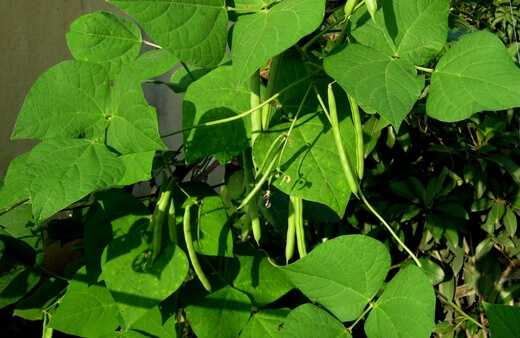
How to grow beans using hydroponics
Beans are incredibly easy to germinate, but should not be submerged until they have sprouted. To sow beans for hydroponics, germinate them in moist tissue, or damp coir compost.
When the roots have developed and are 2-3” long (2-3 weeks after sowing) transplant them into their hydroponic pods. Ensure good water quality and a pH of around 5.5 to 6. Beans are nutrient-hungry plants, so will need regular nutrients (to start, and B nutrients to finish).
Provide supports for taller varieties that allow beans to climb easily. Twine or bamboo canes are the best budget-friendly option.
Pros
Cons
11. Strawberries
Strawberries are a great way to get kids into gardening, and it’s no different with hydroponics. The simple development of the plant, and the gorgeous foliage, coupled with their bright white flowers, make them an enjoyable crop even before they fruit.
While there are tons of benefits to growing strawberries hydroponically (easy being the biggest!), you will lose some flavour, compared to the rich juicy sweetness of strawberries grown in compost, but don’t let that put you off. Strawberries are better than no strawberries after all.

How to grow strawberries hydroponically
Strawberry seeds have a tendency to rot, mould or damp off in wet soil, or even on tissue, so it's actually better to germinate them directly in hydroponic pods, where the clean, oxygenated water helps to prevent rot (as counterintuitive as it might sound). However, sowing directly will produce a smaller yield of strawberries.
If you have access to small strawberry plants or can take runners from last year’s plants, they can be propagated directly into hydroponic pods, and they will grow prolifically with standard nutrient treatments, in most pH conditions.
Pros
Cons
12. Peppers
- Sweet Peppers
- Bell Peppers
- Chilies
Peppers are wonderful hydroponic plants. Once they germinate, they grow far healthier, and pretty much any light conditions will suffice, provided they are warm enough, making them a wonderful, high-impact, rewarding, plant to grow using hydroponics.
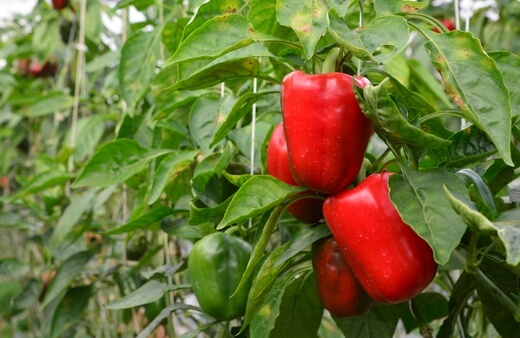
How to grow peppers using hydroponics
Pepper seedlings will damp off if sown directly in hydroponics, so start them early in the year, indoors, in a heated propagator, with an open lid for ventilation. Plant the seeds in coir, and keep it moist, but not sodden.
As peppers germinate, gradually increase their water, but allow their potting medium to dry between watering. When they have a few true leaves, plant the seedlings directly into your hydroponics setup (any kit will work).
Provide them with good light, and a steady temperature above 20°C and pick fruits as soon as they ripen to encourage new fruits.
Pros
Cons
13. Chives
Chives are a handy herb to have in the kitchen and get most of their flavour from their genes, rather than the soil, so grow really quite well without nutrients.
Chives are the only allium that grows reliably in hydroponics, as garlic, leeks, and onions swell and will outgrow in their pods, while chives simply develop new, tiny bulbs at the base of each leaf cluster.

Growing chives using hydroponics
Germinate chives directly in hydroponic pods, in clean, oxygenated water with no nutrients. When they germinate, add some A-nutrients to the water and change the air stone every six weeks.
This creates an ideal environment for these low-nutrient, high-flavour plants, which can be harvested a few times through the season. When your plants are finished, divide your clumps into smaller coir pots, and keep them somewhere cool and dry through winter.
You can reuse the same plants again the following year, with double the harvest.
Pros
Cons
14. Spring Onions
Spring onions need ebb-and-flow or running-water hydroponics to prevent their bulblets from over-swelling, but if you’ve got the right system, they’re a great way to create fresh salads and grow brilliantly alongside other salad crops like lettuce.
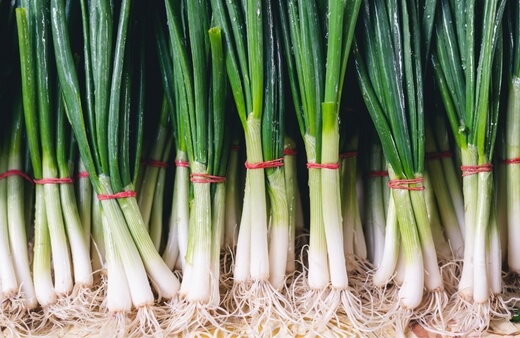
How to grow spring onions hydroponically
Sow spring onions in coir-filled mesh pots in early spring, or even late autumn. When they germinate, allow them to develop roots in their pots before planting into hydroponics.
Once they’ve got a strong root system, drop them into the system, and feed them just A-nutrients every so often. Harvest the whole plant or just the leaves for a repeat crop.
Pros
Cons
15. Celery
There’s nothing more satisfying than the crisp snap of a fresh celery stick. Hydroponics keeps the flavour of celery and actually increases that snap by promoting more regular water uptake, and firmer stems.

Growing celery using hydroponics
Celery naturally needs to be blanched to produce edible stems without harsh strings, so choose self-blanching celery so you don’t have to worry about guarding the stems against light with tubing.
Sow celery directly into your hydroponic system, or sow in a propagator (both work, but you’ll have more control in a propagator). Harvest when the entire plant has developed tight stems, and plenty of leaves at the tips.
Everything is edible, and the leaves are gorgeous in salads!
Pros
Cons
16. Sage
Sage is a surprisingly challenging herb to go grow in hydroponics, as it is a woody herb, and not an annual like basil, or a soft-stemmed perennial like mint, but despite its love of well-drained conditions, you can grow deliciously light sage in hydroponics, which can either be planted into the garden to grow on later or replaced with cuttings each year.
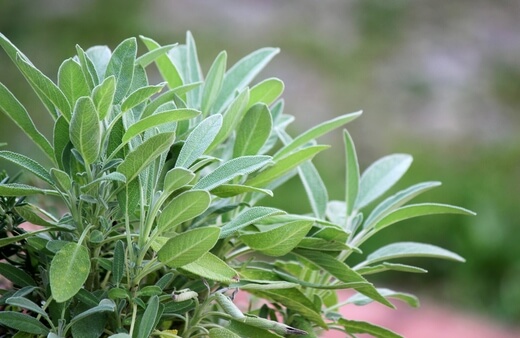
Growing sage hydroponically
The easiest way to start sage in hydroponics is from cuttings. Simply cut a non-flowering stem from an existing plant, and strip the lower leaves. Push this all the way into a mesh pot filled with coir, clay beads, or wool and submerge it into your hydroponic setup.
After a few weeks, you’ll see new roots and new leaves beginning to develop. When the stem begins to extend, cut it back to a fresh pair of leaves to encourage bushier growth.
Pros
Cons
17. Melons
- Cantaloupes
- Watermelons
Melons are a bountiful crop for more ambitious hydroponic gardeners, but you’ll need a decent setup, grow lights, and excellent ventilation for them to work. If you get everything right though, you can grow melons at any time of year, in any climate by utilising the tricks of hydroponics.
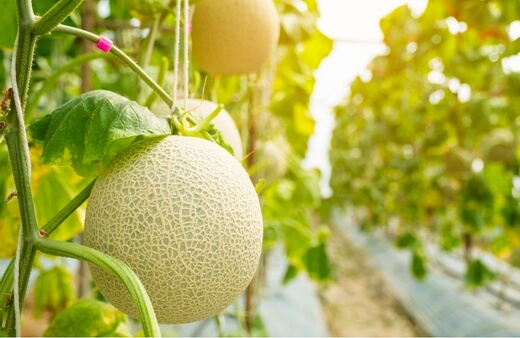
How to grow melons using hydroponics
Start melon seeds in coir pots, in a heated propagator. Like all cucurbits, they can suffer at the seedling stage from over-watering, and I always find it's best to be safe than sorry with melons.
When they germinate, let them grow on, in bright, warm conditions, with regular moisture around their young roots. When they have two or three true leaves, and plenty of roots spilling out of their mesh pots, drop them into the hydroponic system (I find that deep water hydroponics is the best method for melons).
Keep them fed with a balanced mix of nutrients, and replace the air stones regularly. After 3-4 months you should be able to start harvesting your melons, and with any luck, you’ll get three or four decent fruits from each plant.
Pros
Cons
18. Chard
- Ruby Chard
- Swiss Chard
I don’t think there are any growing conditions where chard won’t thrive. It’s an easy crop to grow in hydroponics, and by the end of the growing season, you’ll probably hate me for suggesting it thanks to the sheer abundance of chard you’ll be forced to eat.
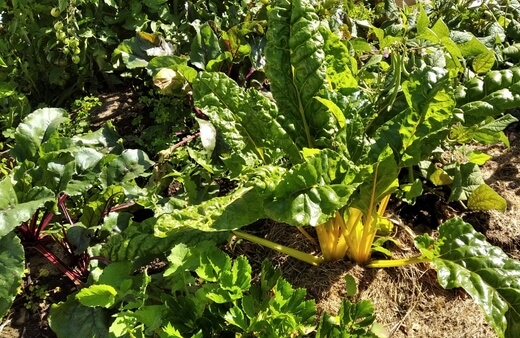
How to grow chard hydroponically
Sow chard directly into the hydroponic pots, and insert it into the system. You can plant seedlings later, but I prefer to cut out the middleman and sow chard directly. Chard can be harvested as young leaves or full plants with thick rhubarb-like stems.
Picking the young leaves occasionally won’t limit the eventual size of the plant either, as long as you leave enough stems to develop. Use the entire plant, steamed or wilted into sauces for a healthy boost to any meal.
Pros
Cons
19. Blueberries
Blueberries grown in hydroponics are a fairly recent discovery, but you can actually increase your yields by 50% or more, which is pretty incredible for these usually challenging plants.
You will need to keep a close eye on pH levels though, as blueberries prefer very acidic soil, unlike the vast majority of other plants you can grow at home which like a near-neutral or slightly acidic pH.
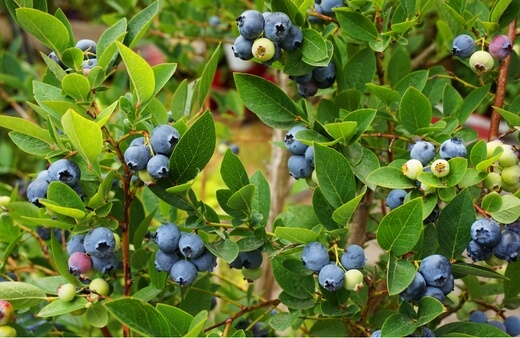
How to grow blueberries using hydroponics
Blueberries are a commitment in hydroponics, and you will need a bucket system to accommodate mature plants as they develop. Start with bare-root blueberry plants, or take your own cuttings directly into hydroponics.
Set up the system with a pH of 4.5 to 5.5, and add a sulphur amendment for hydroponics. Maintain the pH levels, and ensure excellent oxygenation by changing your air bricks every month.
Provide blueberries with a larger-than-normal mesh pot, filled with vermiculite or perlite so their roots have a substrate to hold onto. You may well get your first harvest after just twelve months (much faster than the average 3-4 years outdoors in soil).
Pros
Cons
20. Primocane Raspberries
You can grow raspberries in hydroponics, but I’d strongly advise primocane varieties. Primocane raspberries produce fruit at the top of canes in their first year and can be trained into neat pillars for denser harvest spaces.
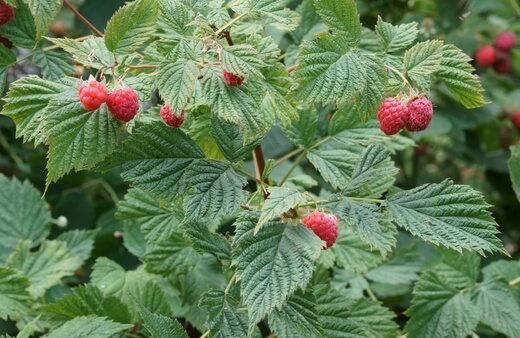
Growing primocane raspberries using hydroponics
Start with raspberry canes, and root them directly into the hydroponic system with a simple inert substrate for roots to cling onto as they develop. Maintain a fairly neutral, if slightly acidic water pH, and feed them once every two weeks with a balanced soluble feed.
Harvest season will be longer, so pick fruits as they ripen, and freeze them if you want a bigger harvest to use all together.
Pros
Cons
21. Cranberries
Cranberries are tricky to grow in normal garden conditions, requiring good draining, but high moisture. Hydroponics provides these conditions and can be a big help to cranberry growers with the wrong conditions outside.
However, cranberries can take up a LOT of space, and need to be triggered by cold temperatures, which does make them quite challenging!
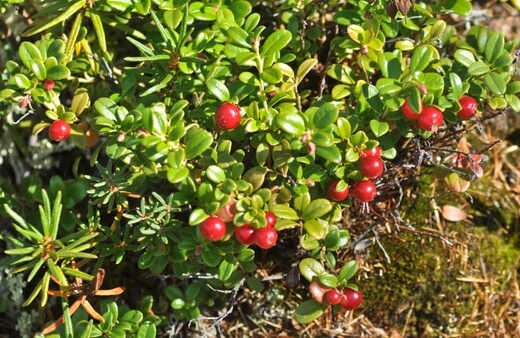
How to grow cranberries using hydroponics
Start with cranberry plug plants, and shake off the soil around the roots. Gently fill perlite around the roots in mesh pots, and lightly tamp the pot on a hard surface to make sure there are no air pockets.
Pop the pot into a hydroponic system with balanced nutrient levels, and a pH of around 6.5. Finally, turn the temperature right down in your grow room. Cranberries need a period of cold (below 5°C ideally) to trigger flowering and berry production.
Then just wait. After 6-9 months you should have a decent harvest of cranberries. In your second year, you’ll have a much bigger plant and much bigger harvests.
Pros
Cons
22. Peas
- Mangetout
- Sugar Snap Peas
- English Peas
Peas can be grown all year round in hydroponics, either for full-yielding plants or as pea shoots for salads. Pea shoots are gorgeously crisp, pea flavoured leaves and stems, which can be grown tightly in any hydroponic system.
For full peas, mangetout or sugar snap peas, you’ll need a more specialised setup.

How to grow peas hydroponically
Start with a basic deep water hydroponic system for peas, with plant supports to prevent the plant from falling under their own weight. As peas develop, tie them into their supports, and feed them with balanced A and B nutrients.
For sugar snap peas and mangetout, grow them at cooler than normal temperatures, which will trigger flowering and pod production. Harvest when the pods are still crisp, or for garden peas, wait until the pods have filled out, and harvest the sweet, sugary peas from inside.
Pros
Cons
23. Broccoli (Calabrese)
Broccoli is not a fast plant to grow, in any situation, but hydroponics takes a lot of guesswork out of growing them and reduces the risk of bolting, and poor flower production. After all, it’s the flowers of broccoli that we eat.
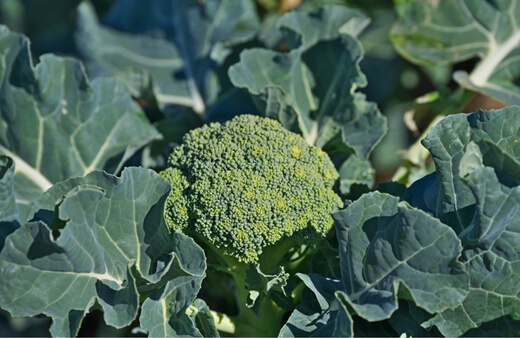
Growing broccoli using hydroponics
Set up your hydroponics with about 60cm between each plant, to provide plenty of room for them to grow. As the plant develops, you will need to top up nutrients and water levels regularly, and change the air stones several times through its growth period.
Broccoli grows best through winter, with an outdoor harvest in spring, so grow hydroponic broccoli in a controlled temperature room at about 15°C.
Harvest broccoli when the head of the plant has filled out with dark green bumps. These are unopened flowers. At this point, you need to harvest quickly to prevent the flowers from opening and ruining your harvest.
Pros
Cons
24. Parsley
Parsley is one of the easiest plants to grow in hydroponics and doesn’t even require oxygenation. Simply change the water once a week to grow parsley in a very basic hydroponic system.
For small-scale hydroponics or kitchen windowsill hydroponics, parsley is a great space-efficient crop, which adds flavour to dishes if you’re not able to dedicate more space to growing indoors.
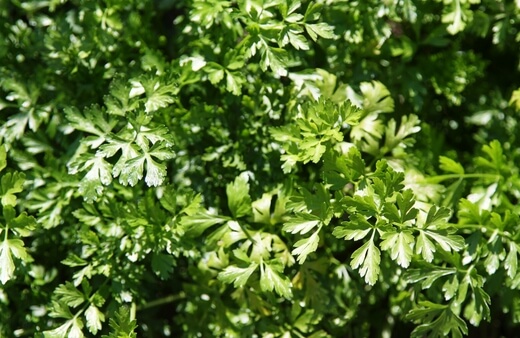
How to grow parsley using hydroponics
Sow parsley seeds on paper towels, or in shallow water, supported by moisture-retentive wool or coir growing mediums. Plant the plugs into any hydroponic system, and wait a few weeks for your first leaves.
Allow the plant to bush out before harvesting, and harvest sparsely but regularly to keep your parsley growing and repeat-cropping.
Pros
Cons
25. Cannabis
If you have a licence, you can grow cannabis legally in Australia, and it is perhaps the most famous hydroponically grown crop that is manageable on a small scale. Hydroponics with grow lights, ventilation, and proper light and temperature control can produce reliable crops all year round.
You do need a licence to grow cannabis in Australia though so keep that in mind before considering this as a potential home-grown crop.
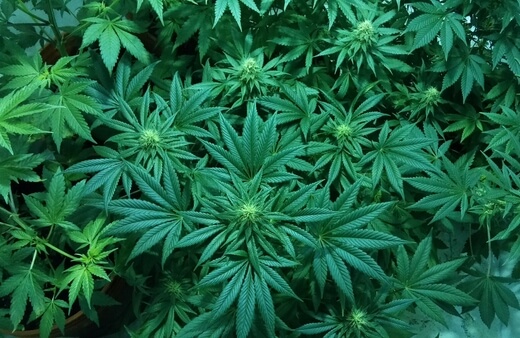
Grow cannabis hydroponically
Start cannabis seeds of a sealed Tupperware on damp tissue, and keep it somewhere cool and dark. After 4-7 days you should see the first signs of gyration. Wait until the first shoot appears, and then gently add the seed to a prepared mesh pot, filled with coir, or any moisture-retentive inert medium.
When the first true leaves appear, add the mesh pot to a hydroponic bucket and provide 18 hours of light per day with temperatures above 18°C. When flowers begin to appear, switch from a Nitrogen feed to low nitrogen, high phosphorus feed, and lower the light levels to 8-12 hours per day.
Harvest when the flowers begin to turn amber, with small milky blobs (trichrome) dotted across the flower and small leaves around it.
Pros
Cons
Hydroponic Plants Frequently Asked Questions
What is the easiest plant to grow hydroponically?
Basil, parsley, and coriander are the easiest plants to grow hydroponically, with minimal nutrient requirements, and generous growth in hydroponic conditions.
They can grow in limited space, and in tiny DIY hydroponic setups with no need for running water, oxygenation or nutrients. Simply change their water regularly, and add fertilisers if they look limp or taste weak.
What are the fastest growing hydroponic plants?
Cut-and-come-again salads, like mustard, rocket, or spinach are the fastest plants to grow in hydroponics, with harvests starting within 3-4 weeks of planting from seed.
If you want to experiment with hydroponics, or check that your oxygen and nutrient levels are right before planting more long-term crops, they are a great way to quickly test your system.
What is the most productive plant for hydroponics?
Kale is the most productive hydroponic plant you can grow, with year-round harvests that start from 6-8 weeks from planting, and continue cropping with daily harvests for up to twelve months.
Are hydroponics healthy?
Hydroponic plants, fed with organic nutrients are as healthy as soil-grown plants. The nutrients may be heavily reconstituted but they are usually from organic sources and provide all the same nutrients that plants would receive in the soil.
While some hydroponic plants will have less flavour than soil-grown alternatives, they are just as healthy, and have similar nutrient levels.
Start Growing Hydroponic Plants Today
Hydroponics doesn’t need to be complicated, and any one of these twenty-five plants above would be simple, enjoyable, and bountiful to grow at home, so what are you waiting for?
Get set up today and enjoy growing these hydroponic plants even if you don’t have a single inch of outdoor space to grow.
Published on November 2, 2022 by Gary Clarke
Last Updated on September 20, 2024





What nutrients are used to feed plants?
Hi Louise,
We use the Airgarden nutrients. They’re organic and everything we grow them just seems to work. Having said that, hydroponic nutrients are usually sold with style over substance.
Unless you’re growing really specific plants that need different nutrients at different stages, they will nearly always work with a simple A and B nutrient set.
Aim for organic nutrients, not just because it sounds good, but because it will help your veggies taste more like they should. Airgarden is a great go-to, but any balanced set of A and B nutrients works well.
Best regards,
Gary Clarke